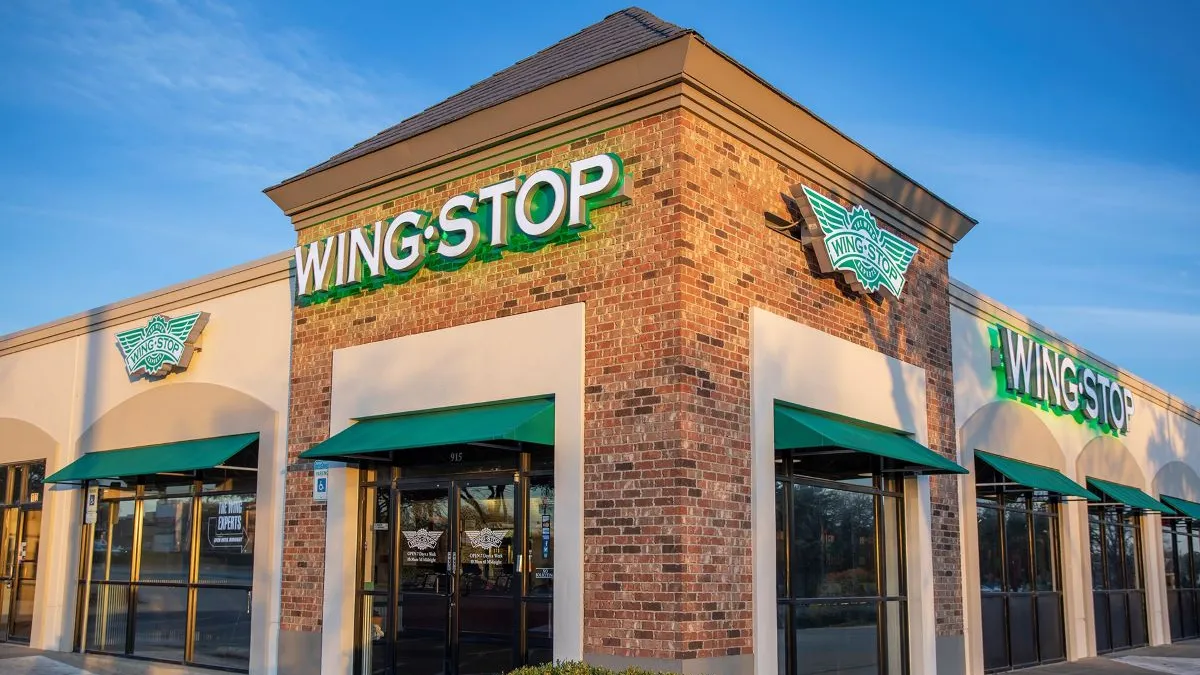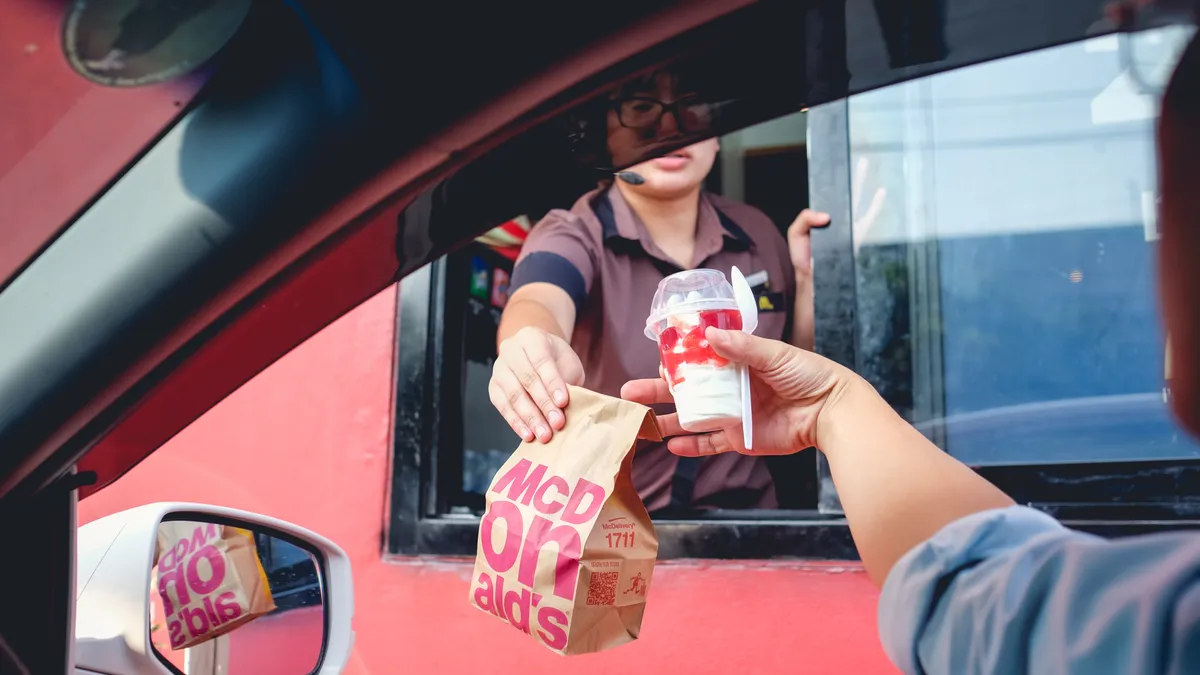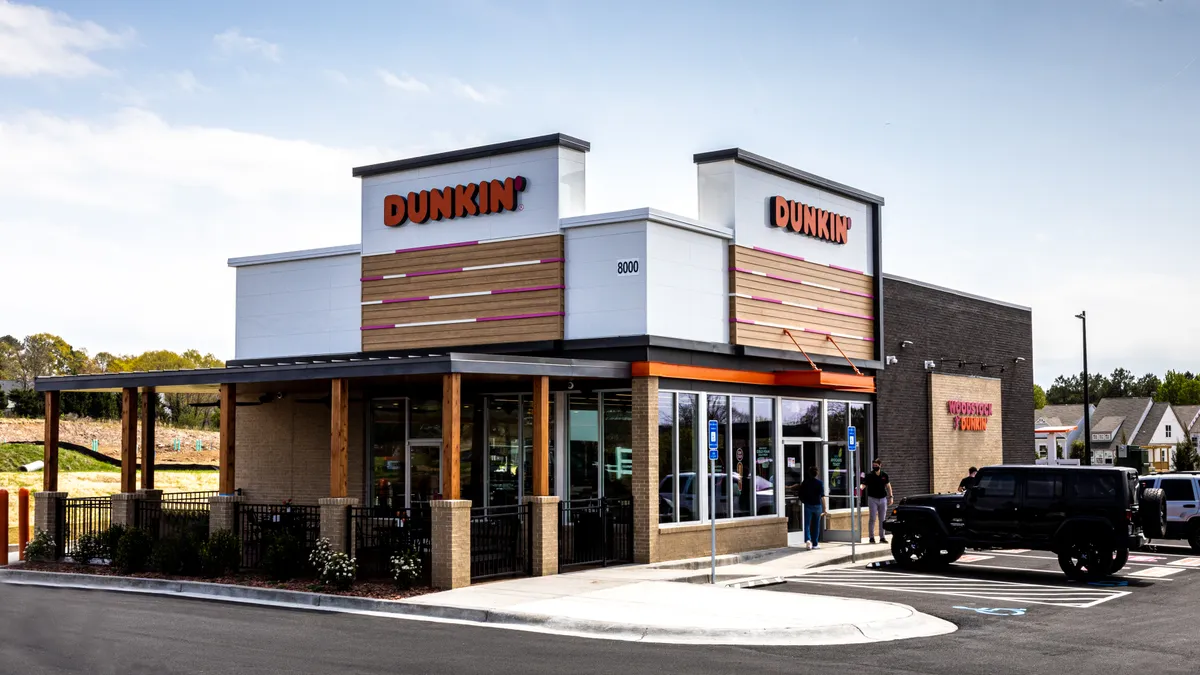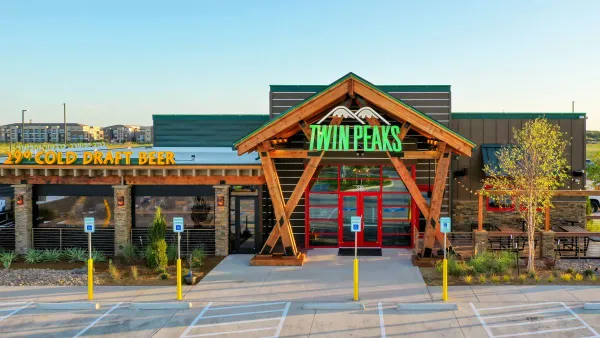Dive Brief:
- Wingstop reported a domestic same-store sales decline of 5.6% during the third quarter, according to an earnings release, its second-consecutive quarter of comparable sales declines and the steepest decrease for the chain within the last five years.
- Wingstop also reported a systemwide sales increase of 10% to $1.4 billion and revenue increase of 8% to $175.7 million, as new unit openings offset the comps drop.
- The chain continues to suffer from soft demand in regions that over-index with Hispanic and low-income consumers, Michael Skipworth, Wingstop’s president and CEO, said during a Tuesday earnings call. That dynamic expanded across more geographies and some middle-income consumers during the quarter, which led to a steeper than expected decline in same-store sales.
Dive Insight:
Wingstop has several initiatives in the works meant to strengthen its business model, which William Blair analyst Sharon Zackfia said in a report “outweighs the bad.”
The brand is still deploying its Smart Kitchen, a new kitchen display system that helps cut ticket times in half. Smart Kitchens have been installed at over 2,000 restaurants, and the company expects to complete its national rollout by the end of the year, Skipworth said.
“We are seeing more and more restaurants that have been on the new kitchen operating platform start to consistently deliver a 10-minute speed of service,” Skipworth said. “Our consumer research and early results in markets with the Wingstop Smart Kitchen show that speed and consistency are sizable opportunities for us to become more of the consumer's consideration set.”
In the Southwest region, where the kitchen systems have been installed the longest, restaurants are consistently meeting the speed of service goals, leading to improvements in guest satisfaction scores, especially in accuracy and consistency, he added. In this region, same-store sales were up in the mid-single-digits versus the U.S. average, Skipworth said.
Wingstop is also continuing franchised expansion. The company has opened 369 net new restaurants in the first nine months of the year. This represents a 19% unit growth rate compared to the year-ago period, exceeding expectations, Skipworth said. The chain is working toward its goal of reaching over 10,000 units, and currently has 2,932 restaurants in operation.
Wingstop also rolled out a new brand and marketing campaign with the tagline of “Wingstop is here,” that will help showcase how Wingstop can fit into “everyday life moments,” Skipworth said.
“Our new campaign is centered around broadening the top of the funnel and bringing in guests and occasions we are best positioned to win,” he said.
Wingstop is testing a new loyalty program and seeing strong results and expects a national rollout during Q2 2026, Skipworth said.
“Given the ongoing implementation of Smart Kitchens alongside much easier comparisons and the upcoming 2026 debut of loyalty, we continue to expect comps to re-inflect into positive territory in 2026,” Zackfia wrote, reiterating its outperform rating. “Key risks include an intense competitive environment, outsized geographic exposure to Texas and California, and a greater proportion of future growth stemming from less proven international markets.”
Fast casual chains have struggled to grow comparable sales this year as they face shifts in consumer spending. Chipotle reported relatively flat same-store sales growth at 0.3% during the third quarter, but CEO Scott Boatwright said key consumer demographics are under financial pressures.
Consumers with incomes below $100,000, which make up about 40% of Chipotle’s base, are pulling back on spending given the current economic conditions. Sweetgreen, which reports earnings later this week, has had two consecutive quarters of same-store sales declines, and Cava’s traffic was flat in the most recent quarter.












